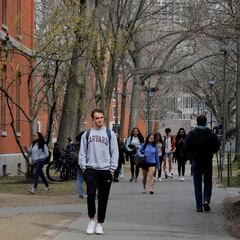Who would benefit from President Biden’s new student loan forgiveness plan?
New proposals for student debt support have been announced by the Department of Education aimed at supporting students in financial hardship.

New plans afoot for what form debt forgiveness could take on in the future. The Higher Education Act (1965) gives the Education Secretary the authority to waive federal student loans, but “current regulations lack specificity on how that authority is applied,” said Under Secretary of Education James Kvaal.
For that reason a panel has been put together by the Biden administration to perform a process known as negotiated rulemaking. 14 negotiators will craft the details of what Biden’s federal student loan debt relief program will be. With negotiators meeting into December, it’s unlikely that the public will know who will be eligible for the new student loan forgiveness and how much until early next year at the soonest.
At this stage, the administration has published a draft regulatory text to keep the public aware of how the negotiations are proceeding. Four groups of students will be targeted by the proposals, but nothing has been agreed as of yet.
Who will benefit?
Students who:
- Currently have outstanding federal student loan balances that exceed what they originally borrowed.
- Have loans that first entered repayment 25 or more years ago.
- Took out loans to attend career-training programs that created unreasonable debt loads or provided insufficient earnings for graduates, as well as borrowers who attended institutions with unacceptably high student loan default rates.
- The Secretary determines are eligible for forgiveness under repayment plans like income-driven repayment or targeted relief programs like Public Service Loan Forgiveness or closed school loan discharges except they have not applied for such relief.
Another group may be targeted, those who are experiencing financial hardship that the current student loan system does not currently adequately address.
“We are fighting to ensure that student debt does not stand in the way of opportunity or prevent borrowers from realizing the benefits of their higher education,” Education Secretary Miguel Cardona said in a release about the proposal
Student debt repayments contine after failed debt forgiveness push
Related stories
Interest began accruing on student debt from 1 September while payments resumed this month.Education Secretary Cardona announced that the agency was implementing a “12-month on-ramp transition period.” The loans of borrowers who can’t pay their monthly bill in full during this period will not be referred to collection agencies nor go into default and it will not lead to negative credit reporting.
Today, the student debt crisis reached $2,037,251,431,018
— Student Debt Crisis Center (SDCC) (@DebtCrisisOrg) October 30, 2023
Federal Student Aid advises borrowers that if they can make payments, they should do so as even during this transition period interest will accrue. Borrowers are also advised to explore repayment plan options if they want to reduce their monthly payments such as the revamped income-driven repayment plan called Saving on a Valuable Education (SAVE) plan.
